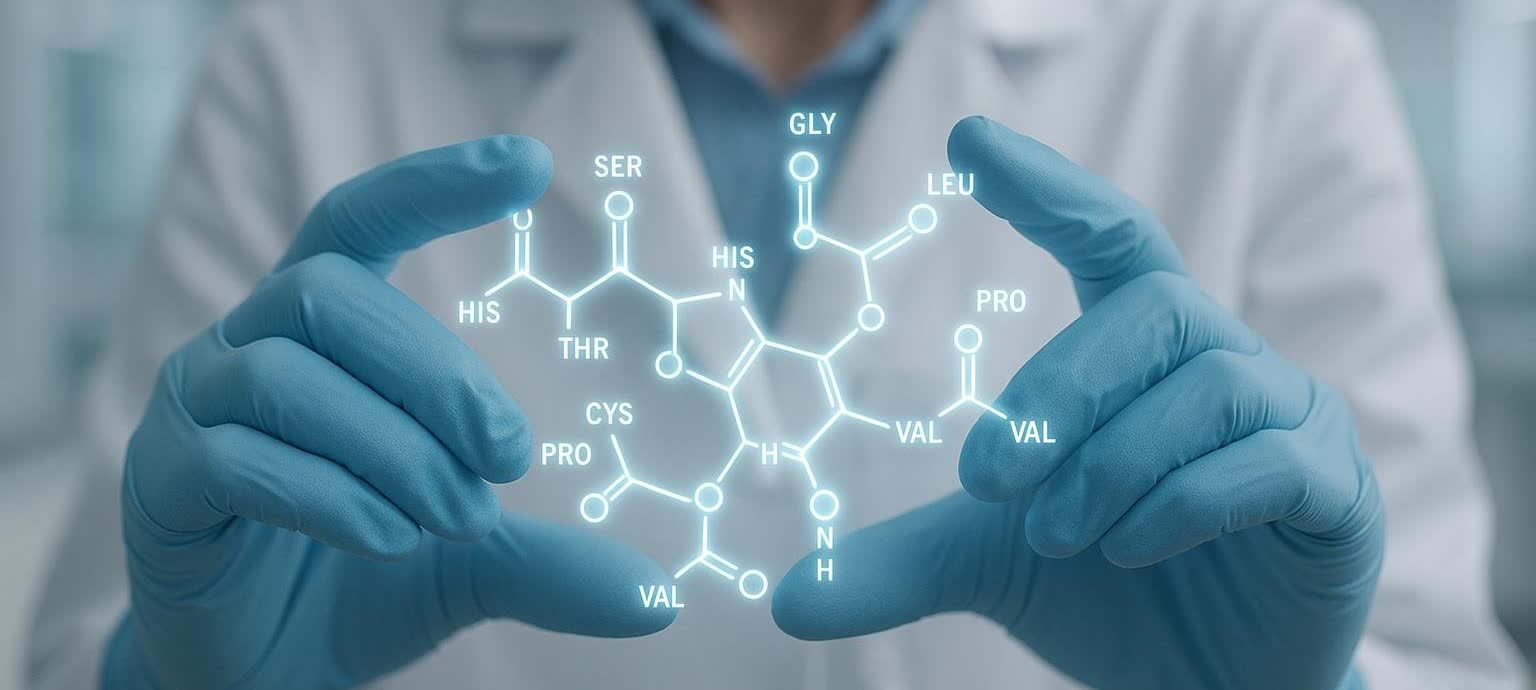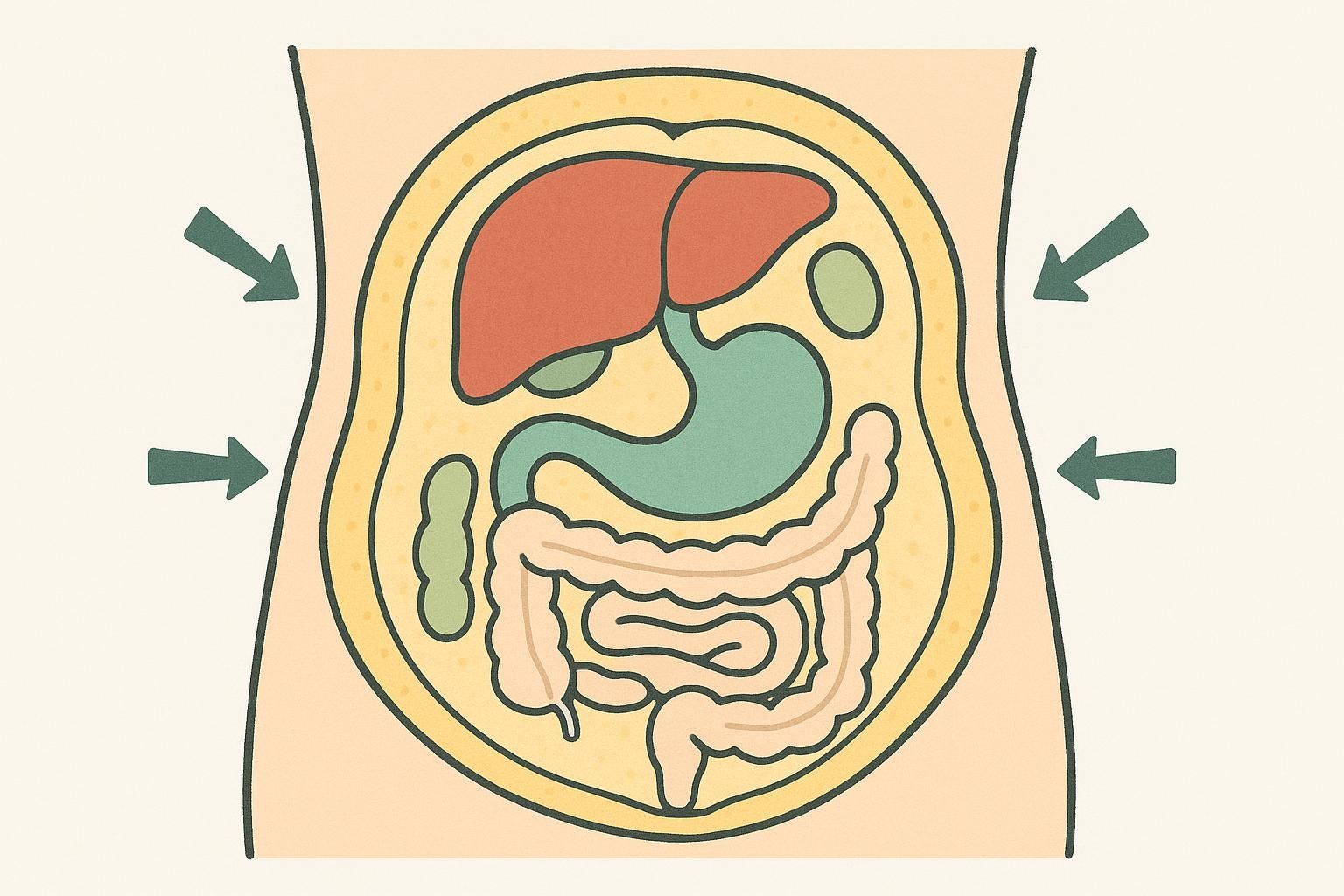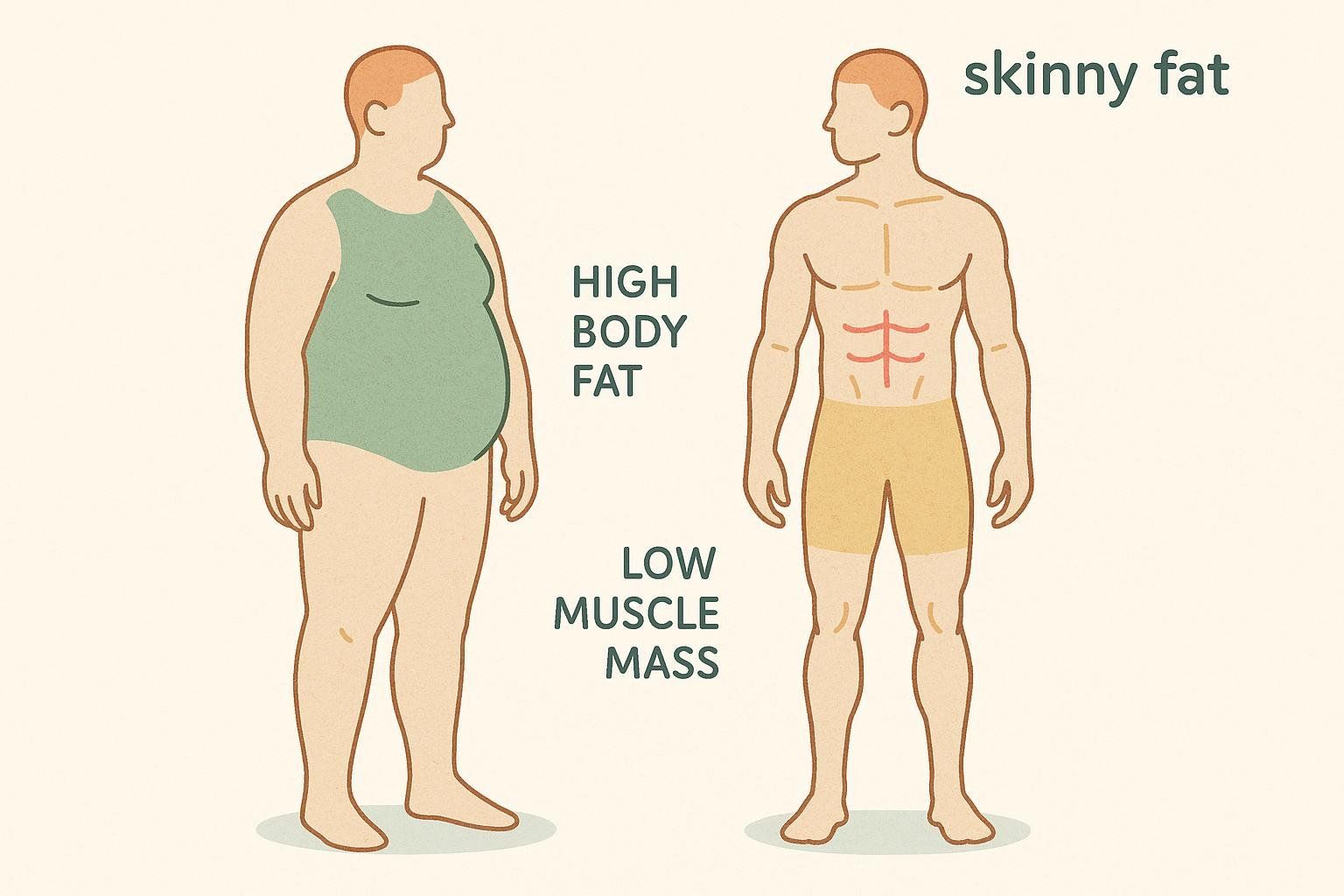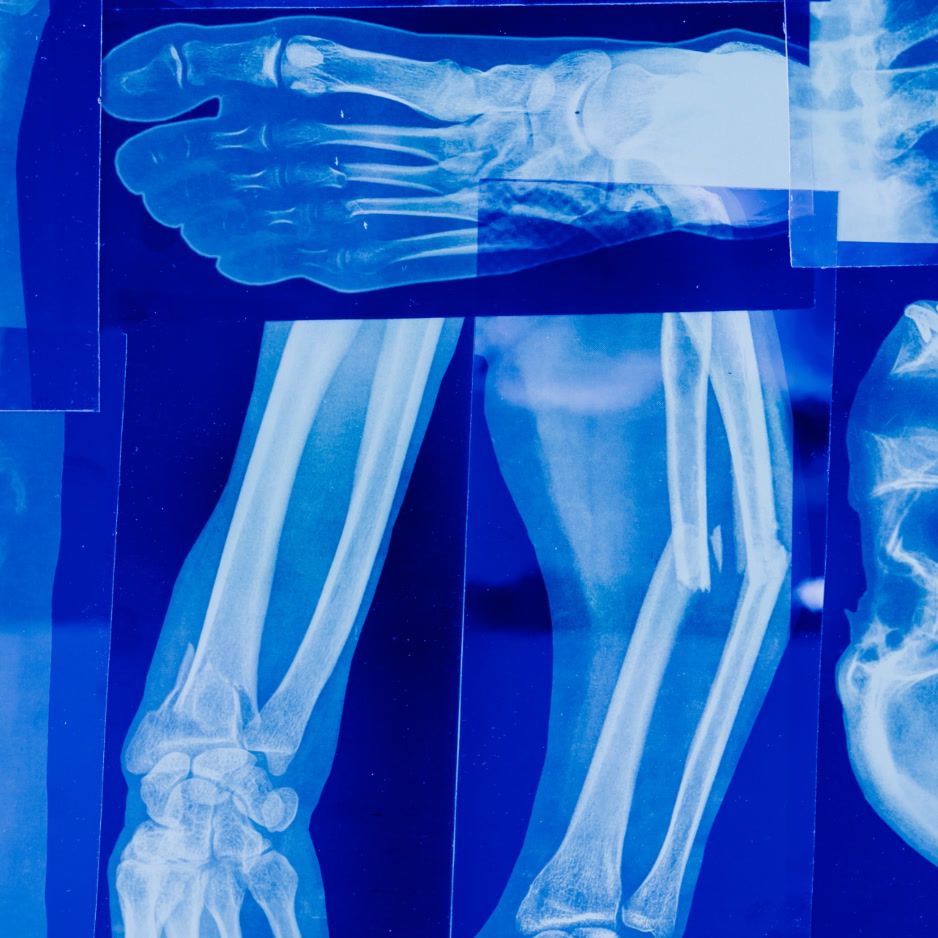The Best Peptides for Weight Loss: A Science-Backed Guide

The Best Peptides for Weight Loss: A Science-Backed Guide
Weight loss peptides represent a significant advancement in managing fat reduction and body composition. By mimicking natural hormones, these compounds offer a targeted, scientific approach for individuals who have reached a plateau with diet and exercise.
If you've been researching peptide therapy for weight loss, you're likely overwhelmed by conflicting information and wondering which options truly deliver results. This comprehensive guide will cut through the marketing noise to give you evidence-based insights into the best peptides for weight loss, their mechanisms of action, safety profiles, and real-world applications.
What Are Weight Loss Peptides?
Weight loss peptides are short chains of amino acids that mimic hormones naturally produced by your body to regulate appetite, metabolism, and fat storage. Think of them as molecular messengers that help reprogram your body's weight management systems.

Unlike stimulants or fat blockers, peptides work by enhancing your body's existing biological pathways rather than forcing unnatural changes. This targeted approach often leads to more sustainable results with fewer side effects compared to traditional weight loss medications.
Do Peptides Work for Weight Loss?
The short answer is yes, but with important caveats. Clinical evidence demonstrates significant weight loss potential for certain peptides, particularly GLP-1 receptor agonists. Meta-analyses of semaglutide trials show average weight loss of 15-20%, while tirzepatide studies demonstrate even greater efficacy with up to 22.5% weight reduction.
However, peptides aren't magic solutions. Their effectiveness depends on:
- Proper medical supervision and dosing
- Accompanying lifestyle modifications
- Individual metabolic factors
- Consistency with treatment protocols
The most successful outcomes occur when peptides are combined with sustainable dietary changes and regular physical activity, not used as standalone treatments.
How Peptides Differ from Other Weight Loss Approaches
Traditional weight loss medications often use a sledgehammer approach—suppressing appetite across the board or blocking nutrient absorption.

Peptides, by contrast, work like precision instruments, targeting specific hormonal pathways that control:
- Hunger and satiety signals
- Blood sugar regulation
- Fat metabolism and storage
- Growth hormone production
- Metabolic rate
The Top Weight Loss Peptide Categories
GLP-1 Receptor Agonists: High-Efficacy Options for Appetite Suppression
Mechanism: These peptides mimic glucagon-like peptide-1, a hormone that regulates blood sugar and dramatically reduces appetite by slowing stomach emptying and enhancing insulin sensitivity.
Primary Benefits:
- Powerful appetite suppression
- Improved blood sugar control
- Reduced cravings for high-calorie foods
- Potential cardiovascular benefits

Semaglutide (Wegovy, Ozempic)
Semaglutide has become the gold standard for peptide-based weight loss, with clinical studies showing an average weight loss of 15-20% over 68 weeks. Originally developed for type 2 diabetes, its significant appetite-suppressing effects led the FDA to approve Wegovy specifically for weight management.
Administration: Administration is managed through a titration schedule, where the dose is started low and gradually increased over weeks or months under medical supervision to ensure tolerability and effectiveness.
Tirzepatide (Mounjaro, Zepbound)
Tirzepatide represents the next evolution in peptide therapy, acting as a dual-agonist that targets both GLP-1 and GIP (glucose-dependent insulinotropic polypeptide) receptors. This dual action creates a synergistic effect that often surpasses semaglutide's results.

A recent meta-analysis of clinical trials demonstrates tirzepatide's superior efficacy:
- 76% more likely to achieve 5% weight loss compared to semaglutide
- 3.24 times more likely to reach 15% weight loss compared to semaglutide
The Dual-Agonist Advantage: The addition of GIP receptor activation enhances fat metabolism and may improve the body's ability to store glucose as glycogen rather than fat, resulting in stronger appetite control and more efficient energy utilization.
Best for: Individuals seeking the highest efficacy, who are prepared to manage side effects common with potent GLP-1/GIP agonists, such as nausea during the dose escalation phase.
Growth Hormone Secretagogues: Body Recomposition Specialists
While GLP-1 agonists excel at pure weight loss, growth hormone secretagogues offer a different value proposition: simultaneous fat loss and muscle preservation or gain. These peptides stimulate your pituitary gland to release more growth hormone, which naturally declines with age.

CJC-1295 + Ipamorelin: Synergistic Growth Hormone Therapy
This combination is highly regarded for its synergistic effects. CJC-1295 provides sustained growth hormone elevation, while ipamorelin delivers precise, pulsatile releases that mimic natural growth hormone patterns.
The clinical rationale for combining these peptides is to target several physiological outcomes:
- Increased lean muscle mass retention during weight loss
- Enhanced fat burning, especially stubborn visceral fat
- Improved sleep quality and recovery
- Skin and joint health improvements
- Minimal impact on cortisol or prolactin levels
Best for: Athletes, fitness enthusiasts, and anyone prioritizing body composition improvement over pure weight loss. This approach requires consistent resistance training to maximize muscle-building potential.
Tesamorelin: The Visceral Fat Specialist
Originally FDA-approved for HIV-associated lipodystrophy, tesamorelin has gained attention for its remarkable ability to target visceral abdominal fat—the dangerous fat surrounding organs that's linked to metabolic disease.

Clinical studies show tesamorelin reduces visceral fat by approximately 18% without significantly affecting subcutaneous fat, making it a compelling choice for people with metabolically unhealthy weight distribution patterns.
Best for: Individuals with normal or slightly elevated BMI who carry excess abdominal fat, particularly those with metabolic syndrome or pre-diabetes.
Fat-Targeting Peptides: The Precision Tools
AOD-9604: The Growth Hormone Fragment
AOD-9604 is a modified fragment of human growth hormone specifically designed to stimulate fat burning without affecting blood sugar levels. Clinical trials showed subjects lost an average of 2.6 kg (approximately 5.7 lbs) over 12 weeks with accompanying improvements in metabolic health markers.
Key advantage: Unlike full growth hormone, AOD-9604 doesn't impact insulin sensitivity, making it safer for people with diabetes or metabolic dysfunction.
Best for: Individuals seeking targeted fat loss without the broader effects of growth hormone stimulation, or those with specific areas of stubborn fat resistant to diet and exercise.
Weight Loss Peptide Comparison Guide
| Peptide | Primary Goal | Mechanism of Action | Best For |
|---|---|---|---|
| Semaglutide | Appetite suppression & weight loss | GLP-1 receptor agonist, delays gastric emptying | Significant weight loss (30+ lbs), diabetes management |
| Tirzepatide | Maximum weight loss | Dual GLP-1/GIP receptor agonist | Those seeking highest efficacy, willing to manage side effects |
| CJC-1295 + Ipamorelin | Body recomposition | Growth hormone secretagogue combination | Athletes, muscle preservation during weight loss |
| Tesamorelin | Visceral fat reduction | Selective growth hormone releasing hormone | Abdominal fat, metabolic syndrome |
| AOD-9604 | Targeted fat burning | Growth hormone fragment, fat oxidation | Stubborn fat areas, minimal systemic effects |
Recovery and Support Peptides
Does BPC-157 Help Burn Fat?
BPC-157 (Body Protection Compound) is primarily known for its healing and recovery properties rather than direct fat burning. Research shows BPC-157 accelerates wound healing, reduces inflammation, and supports gut health, but its fat-burning effects are minimal and indirect.
However, BPC-157 can support weight loss goals by:
- Improving workout recovery, allowing for more consistent training
- Reducing inflammation that can interfere with fat metabolism
- Supporting gut health, which influences nutrient absorption and metabolism
- Potentially improving sleep quality, which affects hunger hormones
While BPC-157 is not a primary fat-burning peptide, it functions as a valuable support compound in comprehensive protocols by optimizing recovery and reducing inflammation that might otherwise impede weight loss efforts.
What Peptides Are Good for Skinny Fat?
"Skinny fat" describes individuals who appear thin but have high body fat percentage, low muscle mass, and poor metabolic health. This body composition requires a different approach than pure weight loss—you need to simultaneously build muscle and reduce fat.

Optimal Peptide Strategies for Skinny Fat
Primary approach: Growth Hormone Secretagogues
- CJC-1295 + Ipamorelin: The gold standard for body recomposition, promoting muscle growth while encouraging fat loss
- Tesamorelin: Specifically targets visceral fat while preserving muscle mass
Secondary approach: Selective additions
- AOD-9604: Can accelerate fat loss without interfering with muscle building
- BPC-157: Supports recovery from increased training demands
Why GLP-1 agonists aren't ideal for skinny fat: While effective for pure weight loss, drugs like semaglutide and tirzepatide may contribute to the loss of lean muscle mass if not paired with sufficient protein intake and a structured resistance training program. This makes them less suitable for body recomposition goals.
The Skinny Fat Protocol Framework
- Muscle building focus: Growth hormone peptides combined with resistance training
- Targeted fat reduction: AOD-9604 for stubborn areas
- Recovery optimization: BPC-157 to support increased training volume
- Metabolic improvement: Focus on insulin sensitivity through diet and exercise
Celebrity Peptide Use and Public Interest
What Peptides Does Elon Musk Use for Weight Loss?
While Elon Musk has publicly discussed using Wegovy (semaglutide) for weight management, posting on X (formerly Twitter) about his experience, specific details about his complete protocol aren't publicly available.
What we can learn from celebrity peptide use:
- Celebrity endorsements have increased public awareness while highlighting the importance of seeking treatment through legitimate medical channels
- Medical supervision is crucial—high-profile users work with top medical teams
- Sustainable results require lifestyle changes beyond just peptide therapy
- Individual responses vary significantly, regardless of economic resources
Important note: Celebrity endorsements or usage don't constitute medical advice. What works for one person may not be appropriate for another, and proper medical evaluation remains essential regardless of who else might be using specific treatments.
Peptide Safety: What You Need to Know
FDA-Approved vs. Off-Label Use
The regulatory landscape for peptides is complex but important to understand. The FDA has approved specific formulations of semaglutide and tirzepatide for weight loss, but many other peptides are used off-label or obtained through compounding pharmacies.
Critical safety warning: The FDA has issued specific alerts about counterfeit and improperly compounded GLP-1 drugs, with reports of hospitalizations due to dosing errors and contamination. Always work with licensed medical providers and verified pharmacies.
Common Side Effects and Management
GLP-1 Agonists:
- Nausea (especially during titration)
- Diarrhea or constipation
- Fatigue
- Potential but rare: pancreatitis, gallbladder issues
Growth Hormone Secretagogues:
- Temporary water retention
- Increased hunger (paradoxically)
- Joint stiffness (usually temporary)
- Potential injection site reactions
Management strategies: Proper dosing protocols, gradual titration, and professional monitoring significantly reduce side effect risks.
Who Should Avoid Peptide Therapy
Absolute contraindications:
- Pregnancy or breastfeeding
- History of pancreatitis
- Multiple endocrine neoplasia syndrome
- Personal or family history of medullary thyroid cancer (for GLP-1 agonists)
Relative contraindications require medical evaluation:
- Active cancer (especially for growth hormone secretagogues)
- Severe kidney or liver disease
- History of eating disorders
- Certain psychiatric medications
Maximizing Results: The Science of Peptide Optimization
Understanding Peptide Combinations
The following clinical rationales explain why medical providers might consider combining certain peptides. All treatment decisions must be made by qualified healthcare providers based on individual patient needs.
Rationale for Combining an Appetite Suppressant with a Fat-Targeting Peptide
The theoretical advantage lies in addressing complementary pathways: a GLP-1 agonist manages caloric intake by reducing hunger and food cravings, while a fat-targeting peptide like AOD-9604 enhances the body's ability to metabolize stored fat. This dual approach may optimize both energy intake and expenditure under medical supervision.
Rationale for Growth Hormone Enhancement Combined with Recovery Support
The scientific basis for pairing growth hormone secretagogues with recovery peptides centers on maximizing training adaptations. Growth hormone peptides support protein synthesis and fat oxidation, while recovery peptides may reduce inflammation and improve tissue repair. This combination is theoretically suited for individuals who need to maintain training intensity during weight management.
Lifestyle Integration
Peptides aren't magic bullets—they're powerful tools that amplify good habits:
Nutrition optimization:
- Ensuring adequate protein intake is crucial for preserving muscle mass during weight loss
- Consistent meal timing to work with peptide mechanisms
- Focus on whole foods to support metabolic health
Exercise synergy:
- Resistance training becomes more effective with growth hormone peptides
- Cardiovascular exercise enhances fat-burning peptide effects
- Recovery protocols support peptide-induced adaptations
Cost Considerations and Access
Typical Cost of Peptide Therapy
Peptide therapy costs can vary dramatically based on multiple factors. To illustrate typical cost structures, consider a hypothetical 6-month semaglutide protocol:
Example Cost: 6-Month Semaglutide Protocol
The following costs vary significantly by provider, geographic location, insurance coverage, and specific treatment protocol:
- Initial consultation and lab work: $400-600
- Monthly semaglutide (Wegovy equivalent): $800-1200
- Quarterly monitoring appointments: $250 each
- Injection supplies: $30-50 monthly
This example would total approximately $6,000-9,000 for six months, not including any potential insurance coverage or manufacturer assistance programs.
Important disclaimer: These are hypothetical estimates based on one common protocol. Always verify pricing directly with medical providers before beginning treatment.
Insurance and Access Options
Insurance coverage reality: Most insurance plans don't cover peptides for weight loss unless you have qualifying medical conditions like type 2 diabetes. However, some plans are beginning to recognize the cost-effectiveness of preventing obesity-related diseases.
Emerging access models:
- Telehealth platforms offering competitive pricing
- Membership-based medical practices with bundled services
- Pharmaceutical manufacturer assistance programs for specific peptides
Measuring Success: Beyond the Scale
Body Composition Tracking
Traditional weight loss metrics miss the real story with peptide therapy. DEXA scans reveal the quality of weight changes, showing whether you're losing fat, gaining muscle, or both.
Key metrics to track:
- Visceral fat reduction (DEXA scan measurement)
- Lean muscle mass preservation or gain
- Bone density changes (especially important with rapid weight loss)
- Body fat percentage trends over time
Metabolic Markers
Successful peptide therapy should improve metabolic health markers:
- Fasting glucose and insulin sensitivity
- Lipid profile improvements
- Blood pressure optimization
- Inflammatory marker reduction (CRP, IL-6)
The Future of Peptide Therapy
Emerging Compounds
Retatrutide: A triple-agonist targeting GLP-1, GIP, and glucagon receptors, currently showing unprecedented weight loss results in clinical trials—up to 24% weight reduction in some studies.
Oral formulations: Companies are developing oral versions of popular peptides to eliminate injection requirements, though bioavailability remains a challenge.
Personalized protocols: Genetic testing and advanced biomarkers are enabling more precise peptide selection and dosing.
Integration with Technology
Smart monitoring: Continuous glucose monitors, body composition scales, and wearable devices are creating feedback loops that optimize peptide therapy in real-time.
AI-driven protocols: Machine learning algorithms are beginning to predict optimal peptide combinations and dosing schedules based on individual response patterns.
Making the Decision: Is Peptide Therapy Right for You?
When Peptide Therapy is Often Considered
- Have plateaued with traditional diet and exercise
- Struggling with clinically significant excess weight or related metabolic health issues
- Are committed to a 6-12 month protocol with medical supervision
- Can afford the financial investment
- Are willing to make comprehensive lifestyle changes
Red Flags and Unrealistic Expectations
- Seeking a quick fix without lifestyle changes
- Unable to commit to regular medical monitoring
- Untreated mental health issues affecting eating behaviors
- Expecting dramatic results without dietary modifications
Conclusion: The Science-Backed Path Forward
When evaluating the best peptides for weight loss, the key lies in understanding your specific goals and metabolic profile. GLP-1 agonists like semaglutide and tirzepatide excel for substantial weight reduction, while growth hormone secretagogues prioritize body recomposition. Support peptides like BPC-157 enhance recovery and optimize training adaptations.
However, success requires more than just the right peptide—it demands medical supervision, lifestyle optimization, and realistic expectations. The most effective approach combines evidence-based peptide selection with comprehensive health monitoring and sustainable habit formation. By approaching peptide therapy with proper medical guidance and commitment to comprehensive lifestyle changes, this innovative treatment path can offer a science-backed solution for achieving lasting weight management goals.


